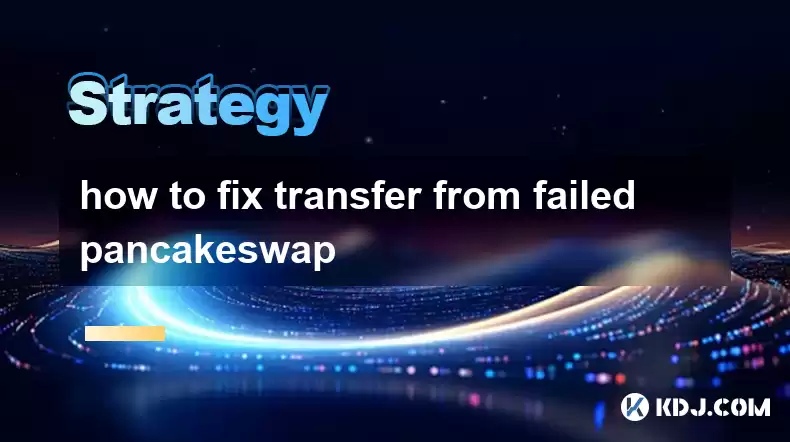-
 Bitcoin
Bitcoin $116800
0.06% -
 Ethereum
Ethereum $3916
2.20% -
 XRP
XRP $3.333
8.10% -
 Tether USDt
Tether USDt $1.000
0.02% -
 BNB
BNB $789.3
1.45% -
 Solana
Solana $177.6
2.58% -
 USDC
USDC $0.0000
0.02% -
 Dogecoin
Dogecoin $0.2232
4.03% -
 TRON
TRON $0.3384
0.01% -
 Cardano
Cardano $0.8005
4.26% -
 Stellar
Stellar $0.4651
11.58% -
 Hyperliquid
Hyperliquid $41.38
5.34% -
 Sui
Sui $3.828
2.87% -
 Chainlink
Chainlink $19.41
11.81% -
 Bitcoin Cash
Bitcoin Cash $581.4
0.02% -
 Hedera
Hedera $0.2623
3.12% -
 Avalanche
Avalanche $23.50
3.00% -
 Ethena USDe
Ethena USDe $1.001
-0.04% -
 Litecoin
Litecoin $121.8
0.85% -
 UNUS SED LEO
UNUS SED LEO $8.986
0.38% -
 Toncoin
Toncoin $3.359
1.47% -
 Shiba Inu
Shiba Inu $0.00001293
2.14% -
 Uniswap
Uniswap $10.61
4.95% -
 Polkadot
Polkadot $3.917
3.45% -
 Dai
Dai $1.000
-0.01% -
 Bitget Token
Bitget Token $4.461
1.26% -
 Cronos
Cronos $0.1516
2.47% -
 Monero
Monero $265.7
-5.07% -
 Pepe
Pepe $0.00001118
2.72% -
 Aave
Aave $283.4
3.76%
How to fix failed pancakeswap transfers
PancakeSwap transfer failures often stem from token scams, incompatible contract versions (like 0.5.17), network congestion, incorrect addresses, insufficient BNB for gas fees, or wallet/platform compatibility issues.
Mar 21, 2025 at 04:06 pm

Common reasons for failure of PancakeSwap transfer
Token-related issues
Token scam : In many cases, the transfer fails because the tokens you trade may be a carefully designed scam. The contract code of such tokens often prevents transfers to liquidity providers, causing users to buy but not sell. You can make a preliminary judgment by viewing the transaction records of the token. For example, on some blockchain browser websites, search for the token name or address and enter the "token tx" tab. If there are only a large number of green (representing buying) records in the transaction list and almost no red (representing selling) records, then there is a very likely problem with the token.
Hidden dangers to contract version : Most token contracts built based on version 0.5.17 may have risks. You can search for the token name or address on a specific blockchain browser website, click "x contract" in the information sidebar (x is the token name) to view the contract version. If it is displayed as version 0.5.17, it is recommended to be cautious and try not to buy it.
Bad network condition
Network congestion : Blockchain networks are like real traffic networks. When there are too many people, congestion will occur. During the period of network congestion, the transaction confirmation time is greatly extended, resulting in the transfer request not being processed for a long time, and ultimately failing. You can check the current network status in real time through a blockchain browser like BscScan. If you find that the network is busy, you can wait for a while before trying to transfer money.
Wallet operation error
Address error : Entering the wrong wallet address is one of the common reasons for failure of transfers. When performing transfer operations, be sure to carefully check the accuracy of the receiving address. To avoid possible errors in manual input, it is recommended to use the copy and paste function. In addition, before large-scale transfers, small-scale transfers can be performed first, and then formal transfers can be performed after confirming that the address is correct.
Insufficient balance : Transfers at PancakeSwap require a certain transaction fee (Gas Fee), which is usually paid in BNB (Binance Coin). If the BNB balance in the wallet is not sufficient to cover the Gas Fee required for this transfer, the transfer will not be successful. Therefore, make sure that there are enough BNB in the account to pay the handling fee before transferring money.
Contract identification problem : As a contract token, if the wallet cannot correctly identify its contract information, it will also lead to the transfer failure. This requires manually adding the contract address of the pancake coin to enable the wallet to display and process the token normally.
Platform version compatibility issues
PancakeSwap version change : After PancakeSwap upgraded from v1 to v2, some users encountered problems when redeeming tokens. Some new tokens may have compatibility issues in v2 version. At this time, you can try to switch back to PancakeSwap v1 version to see if it can solve the problem of transfer failure. However, if it is a new and smaller community token, even if it can be traded in v1 version, beware of whether it is a scam.

How to solve the problem of PancakeSwap transfer failure
User-level solution
Adjust the transfer amount parameter : Try to modify the value of the "from (estimated)" field on PancakeSwap. For example, originally you wanted to redeem 1000000 bonfire, change the value to 1000001. Sometimes such a slight adjustment can make the transaction go smoothly. If the tokens cannot be redeemed after modification, it means that the problem may lie in the token itself or the PancakeSwap platform.
Confirm network status : Before making a transfer, open a blockchain browser (such as BscScan) to view the current network transaction status and delay status. If the network is busy, you can choose to try to transfer money during the relatively idle time of the network to improve the transaction success rate.
Verify the wallet address : Carefully check the receiving wallet address entered during transfer to ensure that it is accurate. Use the copy and paste function to avoid transfer failures due to manual entry errors. At the same time, before officially transferring large amounts of funds, a small amount of transfer is carried out to verify the validity of the address.
Compensate transaction fee balance : Confirm that there is enough BNB in your wallet as transaction fee. If the BNB balance is insufficient, you can purchase it through a formal cryptocurrency exchange or other reliable channels to ensure that the account has enough funds to pay Gas Fee and ensure the smooth transfer.
Manually add contract address : If the wallet fails to recognize the Pizza Coin, you need to manually add its contract address. You can access the official PancakeSwap website or other authoritative financial information websites to obtain the contract address of the pancake coins. Then in the wallet application, find the function entrance to add token contract address and enter the accurate contract address as prompts. After adding, the pancake coins should be displayed and transferred normally.
Switch platform version : Given that there are some redemption problems during the migration of PancakeSwap v1 to v2, if the transfer fails, you can try to switch to PancakeSwap v1 version for operation. However, for new tokens, especially those with weak community power behind them, you should also be vigilant when trading in v1 version to prevent potential scam risks.
Developer-level solution
Turn off specific features : Developers can solve the problem of transfer failure by editing token contracts. First, log in to the BscScan website and search for your tokens. After entering the token page, click "write contract", which will open the token contract editing interface. Under the “write contact” tab, click “connect to web 3” and select the wallet you want to connect to, such as MetaMask or WalletConnect. After the connection is successful, scroll down the page and find the "set swap and liquidify enabled" function. This function is a Boolean data type, with only two options: true or false. Due to PancakeSwap's migration from v1 to v2, this feature caused a "transfer from failed" error. Set it to "false", then click "write" to turn off the function and fix the error so that other users can buy and sell the token normally. It should be noted that if token ownership has been waived on BscScan, the contract will not be modified.
Disclaimer:info@kdj.com
The information provided is not trading advice. kdj.com does not assume any responsibility for any investments made based on the information provided in this article. Cryptocurrencies are highly volatile and it is highly recommended that you invest with caution after thorough research!
If you believe that the content used on this website infringes your copyright, please contact us immediately (info@kdj.com) and we will delete it promptly.
- BlockchainFX: The Crypto Presale Investors Can't Ignore
- 2025-08-08 19:10:12
- Pump.fun, Memecoins, Glass Full: Solana's Launchpad Wars Heat Up!
- 2025-08-08 18:50:12
- Crypto Market Heats Up: Altcoin Spree Drives Market Cap to $3.87T
- 2025-08-08 19:05:02
- Cardano (ADA) Price Gears Up: Open Interest Surges Amidst Key Resistance Retest
- 2025-08-08 19:15:42
- Bitcoin, Meme ICOs, and FOMO: Catching the Next Crypto Wave
- 2025-08-08 18:30:34
- OM, Investment, and Growth: Decoding the Latest Trends in Digital Assets
- 2025-08-08 18:30:34
Related knowledge

How to use stop-loss orders to limit potential losses?
Aug 08,2025 at 02:01pm
Understanding Stop-Loss Orders in Cryptocurrency TradingA stop-loss order is a risk management tool used by traders to automatically sell a cryptocurr...

How to read cryptocurrency charts and use technical analysis?
Aug 08,2025 at 11:08am
Understanding the Basics of Cryptocurrency ChartsCryptocurrency charts are graphical representations of price movements over time. These charts are es...

How to avoid common crypto investment mistakes?
Jul 13,2025 at 01:35am
Understanding the Risks of Crypto InvestmentInvesting in cryptocurrency can be highly rewarding, but it also comes with significant risks. One of the ...

What is a long-short crypto strategy?
Jul 15,2025 at 10:56am
Understanding the Basics of a Long-Short Crypto StrategyA long-short crypto strategy is an investment approach where traders simultaneously take long ...

What is a long-short crypto strategy?
Jul 11,2025 at 01:28pm
Understanding the Basics of Long-Short Crypto StrategyA long-short crypto strategy is an investment approach where traders take both long and short po...

How to use the RSI indicator for crypto?
Jul 12,2025 at 03:56pm
Understanding the RSI Indicator in Cryptocurrency TradingThe Relative Strength Index (RSI) is a momentum oscillator used to measure the speed and chan...

How to use stop-loss orders to limit potential losses?
Aug 08,2025 at 02:01pm
Understanding Stop-Loss Orders in Cryptocurrency TradingA stop-loss order is a risk management tool used by traders to automatically sell a cryptocurr...

How to read cryptocurrency charts and use technical analysis?
Aug 08,2025 at 11:08am
Understanding the Basics of Cryptocurrency ChartsCryptocurrency charts are graphical representations of price movements over time. These charts are es...

How to avoid common crypto investment mistakes?
Jul 13,2025 at 01:35am
Understanding the Risks of Crypto InvestmentInvesting in cryptocurrency can be highly rewarding, but it also comes with significant risks. One of the ...

What is a long-short crypto strategy?
Jul 15,2025 at 10:56am
Understanding the Basics of a Long-Short Crypto StrategyA long-short crypto strategy is an investment approach where traders simultaneously take long ...

What is a long-short crypto strategy?
Jul 11,2025 at 01:28pm
Understanding the Basics of Long-Short Crypto StrategyA long-short crypto strategy is an investment approach where traders take both long and short po...

How to use the RSI indicator for crypto?
Jul 12,2025 at 03:56pm
Understanding the RSI Indicator in Cryptocurrency TradingThe Relative Strength Index (RSI) is a momentum oscillator used to measure the speed and chan...
See all articles

























































































